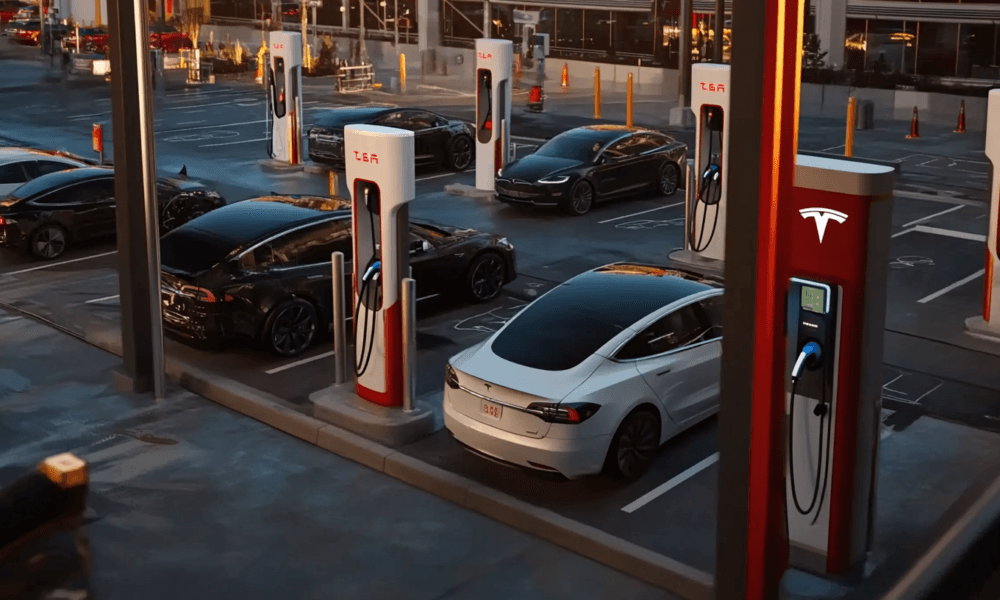Electric Vehicle Infrastructure: Challenges and Solutions
As electric vehicles (EVs) become increasingly popular, the need for robust and efficient EV infrastructure has become a critical component of the transition to sustainable transport. While the adoption of electric vehicles promises to reduce greenhouse gas emissions, improve air quality, and decrease our reliance on fossil fuels, the lack of a widespread charging infrastructure remains a significant barrier. To support the continued growth of EVs, governments, businesses, and individuals must work together to address the challenges facing EV infrastructure and explore potential solutions. In this article, we will discuss the importance of electric vehicle infrastructure, the major challenges it faces, and the innovative solutions that are being developed to overcome these obstacles.
The Importance of EV Infrastructure for a Sustainable Future
Electric vehicle infrastructure is crucial to the success of EV adoption and plays a key role in achieving a sustainable transportation future. The availability of accessible, efficient, and reliable charging infrastructure is fundamental to addressing the concerns of potential EV owners and encouraging widespread adoption.
- Supporting EV Adoption: One of the main reasons people hesitate to purchase an electric vehicle is “range anxiety” – the fear of running out of battery power without having access to a charging station. A well-developed charging infrastructure can alleviate these concerns and support the growth of EV ownership.
- Reducing Emissions: A switch from internal combustion engines (ICE) to electric vehicles significantly reduces greenhouse gas emissions. However, to fully benefit from this shift, it is necessary to develop charging stations powered by renewable energy sources, ensuring that the carbon footprint is minimized throughout the entire life cycle of an electric vehicle.
- Economic Growth and Innovation: Developing and expanding EV infrastructure can lead to economic growth by generating jobs and encouraging technological innovation. Investment in charging networks, battery technology, and renewable energy systems will contribute to a sustainable economy.
Key Challenges Facing EV Infrastructure
Despite the importance of EV infrastructure, there are several challenges that must be addressed to ensure a successful transition to electric mobility. These challenges include the availability of charging stations, grid capacity, charging speeds, and more.
1. Limited Charging Network Coverage
A significant challenge facing EV infrastructure is the limited availability of charging stations. Many regions, particularly rural areas, still lack sufficient charging infrastructure, which restricts EV owners’ ability to take long trips with confidence.
- Urban vs. Rural Disparities: Most existing charging stations are concentrated in urban areas, making it difficult for rural residents to transition to electric vehicles. Expanding the charging network to these underserved regions is vital for ensuring equitable access to EV technology.
- Range Anxiety: Without a widespread network of charging stations, drivers may be hesitant to switch from gasoline-powered cars to EVs due to concerns over running out of power during long journeys.
2. High Installation Costs
The cost of installing charging stations is another significant challenge to the development of EV infrastructure. Charging stations, particularly those with high power outputs (fast chargers), require considerable investment in equipment, site preparation, and grid upgrades.
- High-Power Charging: DC fast chargers are expensive to install due to the need for advanced equipment and infrastructure upgrades. As a result, many charging providers focus on installing slower, more affordable Level 2 chargers, which can be less convenient for users who need quick top-ups.
- Cost Sharing: The costs involved in installing public charging stations often need to be shared between governments, private investors, and local businesses to make projects feasible. Determining the right balance of cost-sharing can be challenging and may lead to delays in the deployment of charging stations.
3. Grid Capacity and Stability
The widespread adoption of electric vehicles will place increased demand on electricity grids. The need for reliable and sustainable power to support EV charging is a challenge that requires substantial investment in grid infrastructure and renewable energy sources.
- Peak Demand: The simultaneous charging of multiple electric vehicles, especially during peak hours, can strain the power grid and lead to instability. Managing the demand for electricity to ensure reliable power distribution is a major challenge.
- Renewable Integration: To ensure that electric vehicles are as environmentally friendly as possible, the power used to charge them should ideally come from renewable energy sources like solar and wind. However, integrating renewable energy into the grid and managing intermittent supply requires modernizing grid infrastructure and adding storage solutions.
4. Charging Speeds and User Convenience
Charging times are a critical factor for consumers when deciding whether to switch to an electric vehicle. The speed of charging at public stations varies significantly depending on the type of charger used.
- Level 1 and Level 2 Chargers: These chargers are more affordable but take longer to charge a vehicle. Level 1 chargers, which plug into a standard outlet, can take over 12 hours to charge a vehicle, while Level 2 chargers typically require 4-8 hours for a full charge.
- DC Fast Chargers: DC fast charging stations can significantly reduce charging time, providing up to 80% of the battery’s capacity in around 30 minutes. However, the limited availability and higher cost of these chargers can make them less accessible to the general public.
5. Standardization and Compatibility
The lack of standardization in charging infrastructure can also be a challenge. Different electric vehicle manufacturers may use proprietary charging connectors, which can complicate the user experience.
- Different Connectors: There are various types of charging connectors, such as CHAdeMO, CCS (Combined Charging System), and Tesla Supercharger. A lack of compatibility between chargers and vehicle models can make finding an appropriate charging station more challenging.
- Interoperability: Achieving interoperability between different networks of charging stations is essential for a seamless user experience. Collaboration between automakers, charging providers, and regulatory bodies is needed to establish common standards and ensure widespread compatibility.
Solutions to Overcome EV Infrastructure Challenges
Despite the challenges, innovative solutions are being developed to create a more reliable and accessible EV charging network. Here are some of the key solutions that can help overcome the obstacles facing EV infrastructure:
1. Expanding Public Charging Networks
To support the growing number of electric vehicles, it is essential to expand public charging networks. Governments and private companies are working together to increase the availability of charging stations across urban and rural areas.
- Government Incentives: Many governments are providing financial incentives, grants, and subsidies to encourage the development of charging infrastructure. These incentives make it more economically feasible for private investors to participate in the expansion of public charging networks.
- Charging Hubs: Creating charging hubs in high-traffic areas, such as shopping centers, public parking lots, and highways, ensures that EV drivers have convenient access to fast charging when they need it.
2. Leveraging Renewable Energy for Charging Stations
To maximize the environmental benefits of electric vehicles, charging infrastructure should be powered by renewable energy. Solar-powered charging stations and wind energy integration can reduce the carbon footprint of EV charging and contribute to a greener future.
- Solar-Powered Charging Stations: Installing solar panels at charging stations can help provide a sustainable source of electricity for EVs. These stations can also store excess energy in batteries for use during peak times or when the sun is not shining.
- Energy Storage Solutions: Integrating battery storage systems into charging infrastructure can help stabilize the grid by storing excess energy and providing it during times of high demand.
3. Smart Charging and Grid Management
Smart charging solutions can help manage the demand on the electricity grid and ensure that EVs are charged in a way that benefits both consumers and utilities.
- Time-of-Use Charging: Encouraging EV owners to charge during off-peak hours can help alleviate grid strain. Time-of-use pricing can incentivize drivers to charge their vehicles when electricity demand is low, reducing the risk of overloading the grid.
- Vehicle-to-Grid (V2G) Technology: Vehicle-to-grid (V2G) technology allows electric vehicles to send electricity back to the grid during peak demand periods. This two-way flow of electricity can help balance supply and demand, stabilize the grid, and provide an additional source of income for EV owners.
4. Fast Charging Network Expansion
Expanding the network of DC fast charging stations can help reduce charging times and improve user convenience. Investments in fast charging infrastructure, particularly along highways and major travel routes, can address range anxiety and make long-distance travel more feasible for EV drivers.
- Highway Corridors: Developing fast charging stations along major highway corridors ensures that drivers have access to charging when traveling long distances. This approach is essential for addressing range anxiety and promoting EV adoption.
- Private Investment: Companies like Tesla, Electrify America, and Ionity are investing in the expansion of fast charging networks, making it easier for drivers to access high-speed charging across different regions.
Conclusion
The transition to electric vehicles is a critical component of achieving a sustainable transportation future, but it cannot succeed without a well-developed and reliable EV infrastructure. Addressing the challenges of limited charging networks, high installation costs, grid capacity, charging speed, and standardization is essential to support the widespread adoption of electric vehicles. By expanding public charging networks, leveraging renewable energy, implementing smart charging solutions, and investing in fast charging infrastructure, we can create a robust and accessible EV charging ecosystem that encourages more people to make the switch to electric.
The development of electric vehicle infrastructure requires collaboration between governments, businesses, and individuals. By working together to overcome the challenges and implement innovative solutions, we can create a sustainable and efficient charging network that supports the growth of electric mobility and contributes to a cleaner, greener future.




No Comment! Be the first one.